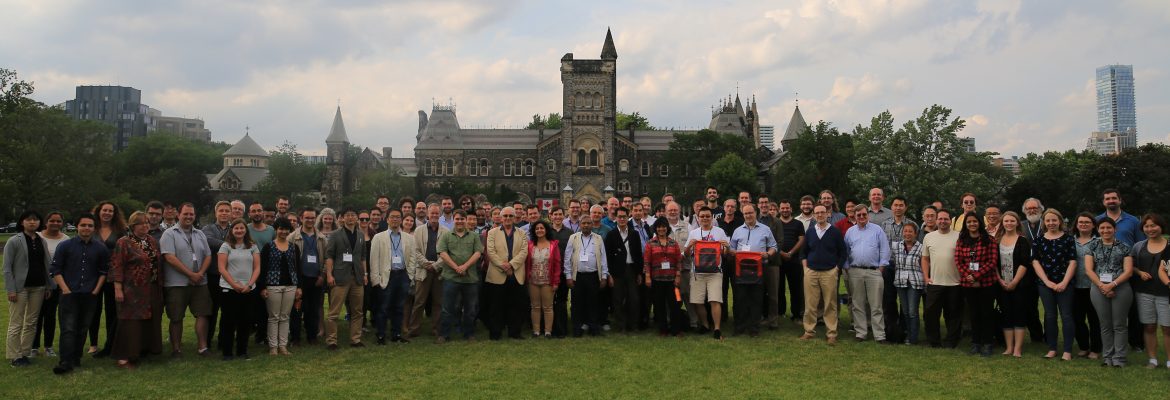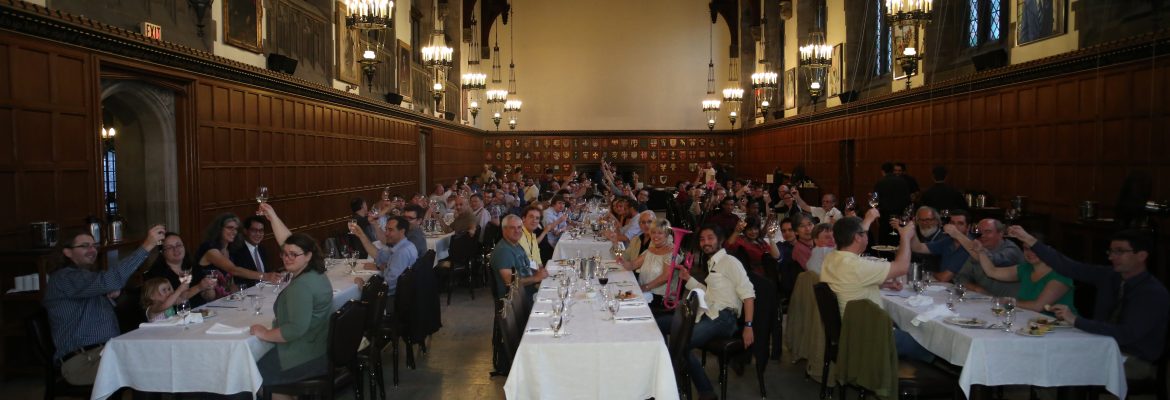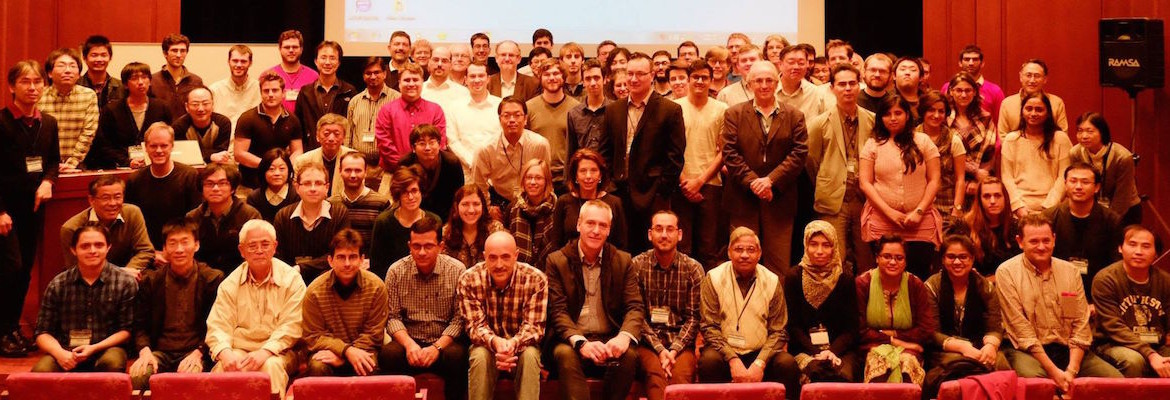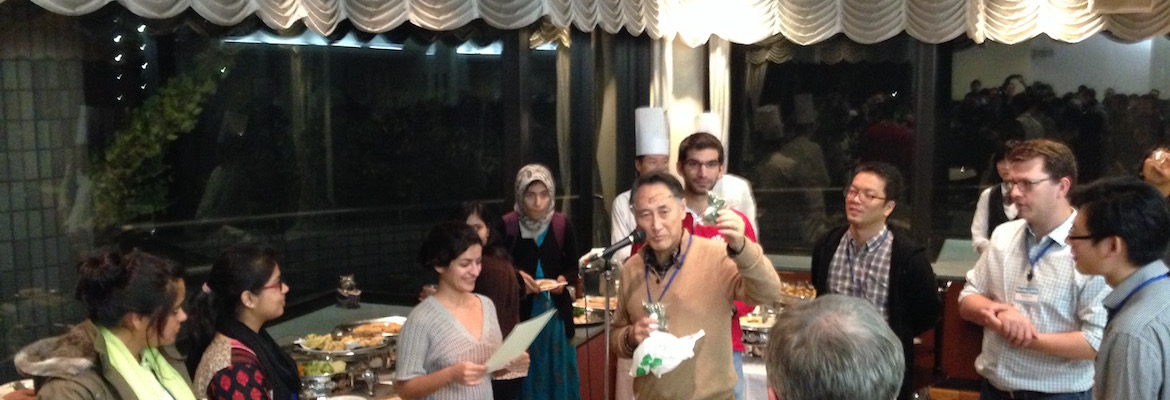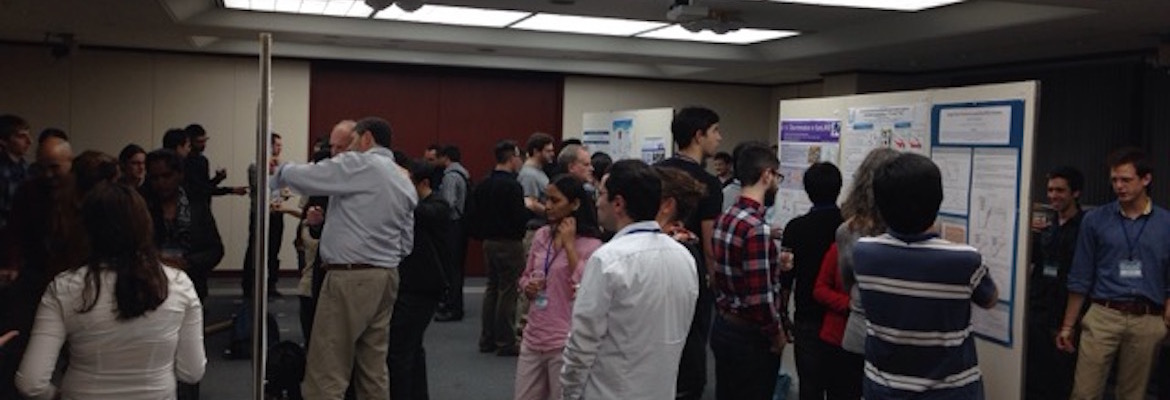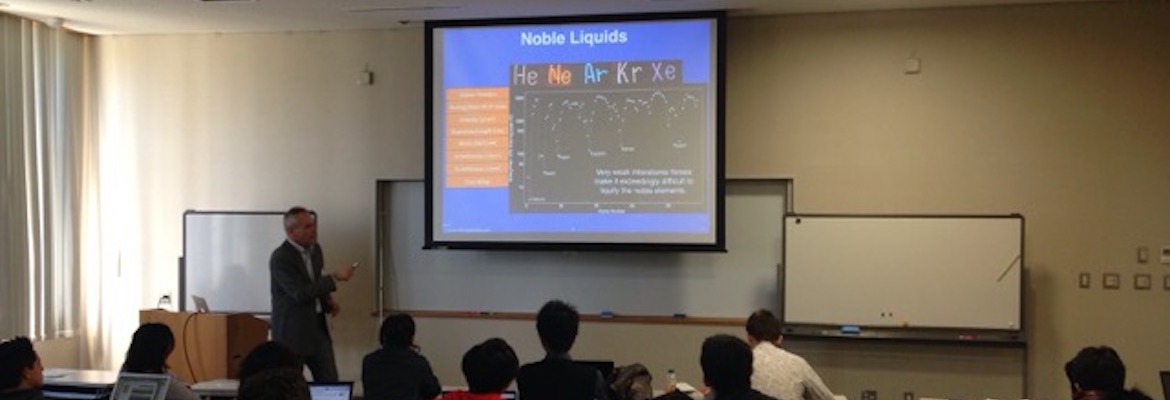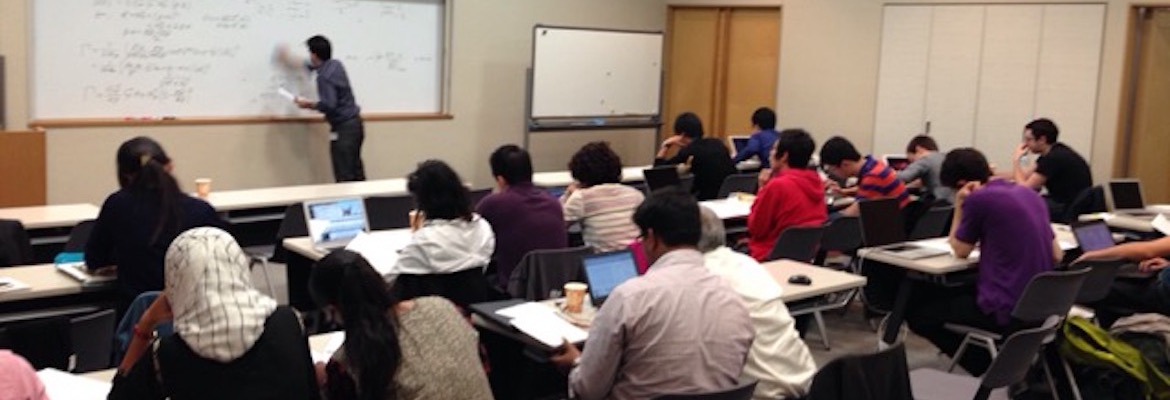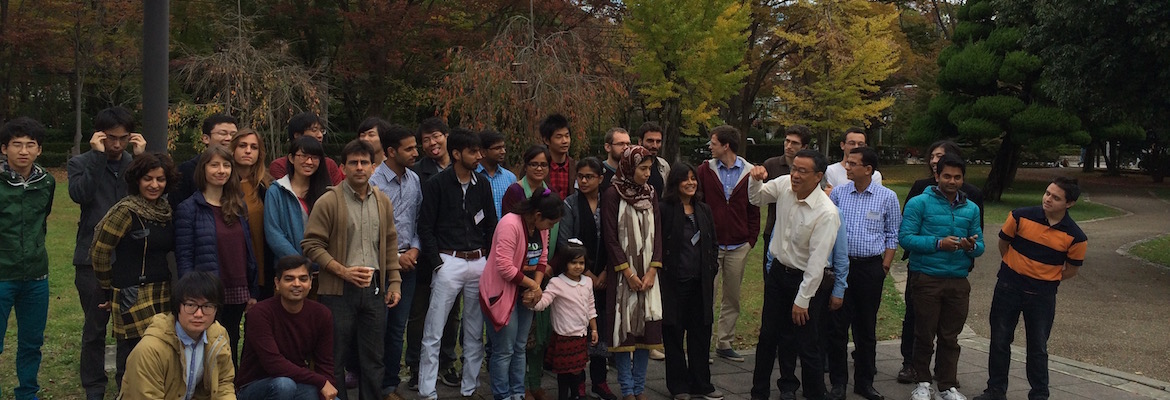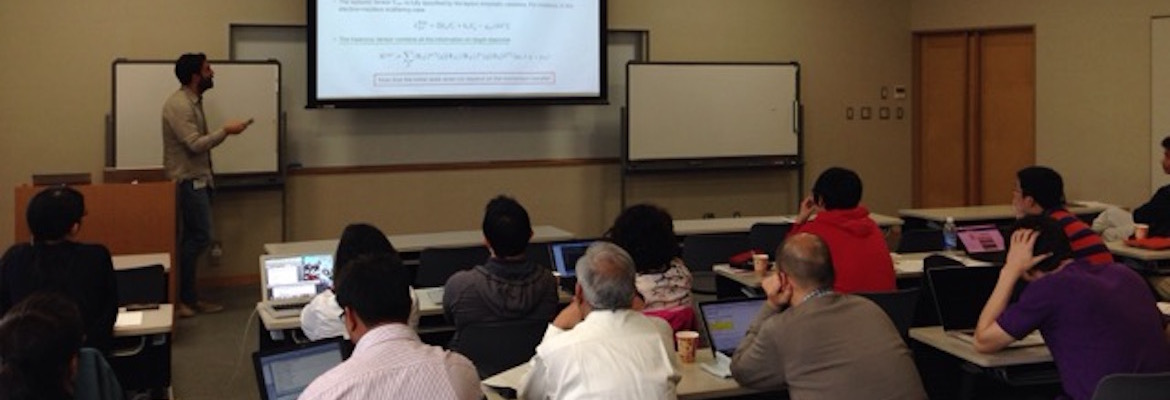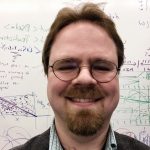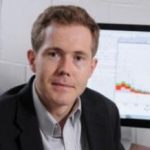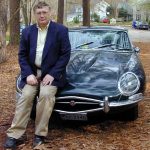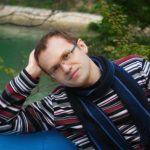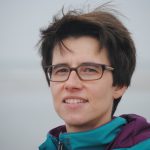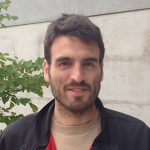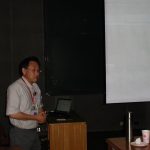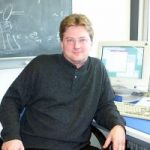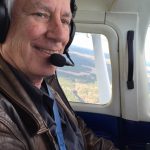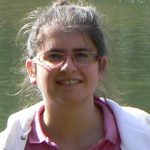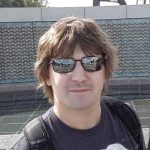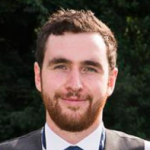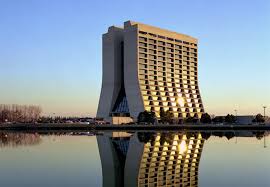NuSTEC Training in Neutrino-Nucleus Scattering Physics 2017
Welcome to the NuSTEC school 2017 webpage!
The NuSTEC School on Neutrino Nucleus Scattering Physics will be held at Fermilab this 7-15 November 2017. Applications are closed.
The program will include 33 hours of lectures and 12 hours of recitation encouraging questions and discussion on all of the day’s lectures. The aim of the program is to provide the necessary theoretical background on the physics of electroweak interactions with nucleons and nuclei. It should allow the participants to understand recent developments and to contribute to this field, which has become very important for the future of neutrino physics. Although this training is ideally suited for experimental and theoretical advanced graduate students and young postdocs, senior researchers may find these lectures informative and are welcome to participate.
Program
Time and Date
09:00 – 10:00
10:30 – 11:30
13:00 – 14:00
14:30 – 15:30
15:30 – 16:30
Nov.7
1
2
2
3
–
Nov.8
2
3
3
4
–
Nov.9
4
5
6
7
–
Nov.10
4
5
6
7
–
Nov.11
–
–
–
–
–
Nov.12
8
10
8
10
–
Nov.13
8
9
10
9
12.1
Nov.14
9
12.1
11
12.2
–
Nov.15
12.1
11
11
12.2
–
16:30 – 18:00
Recitation
Everyday, there is a dedicated recitation session. Students are encouraged to ask questions and discuss on all of the day’s lectures with lecturers.
-
The Practical Beauty of Neutrino-Nucleus Interations (1 hour)
-
Introduction to electroweak interactions on the nucleon (3 hours)
Prof. Richard Hill (University of Kentucky and Fermilab)
Electromagnetic interactions; V-A and current-current theories of weak interactions; CVC and PCAC; single-nucleon matrix elements of the electroweak current and associated form factors; parameterizations and sources of experimental information about electromagnetic and weak form factors.
-
Introduction to neutrino-nucleus scattering (3 hours)
Prof. Wally Van Orden (Old Dominion University and Jefferson Lab, VA)
Generalities of electron- and neutrino-nucleus inclusive and semi-inclusive scattering off nuclei. Phenomenological properties of NN interactions. Relativistic Fermi gas model (success and limitations); shell model; relativistic mean field. Elastic scattering and nuclear form factors. Scaling and superscaling.
-
Strong and electroweak interactions in nuclei (3 hours)
Dr. Saori Pastore (Los Alamos National Lab., NM)
Two- and three-nucleon pion exchange interactions; realistic models of two- and three-nucleon interactions; realistic models of nuclear electroweak currents including two- and many-body terms; short-range structure of nuclei, nuclear correlations, and quasi-elastic scattering.
Reading materials
– text books –
‘Pions and Nuclei“, T. Ericson and W. Weise, ISBN-13: 978-0198520085 (Oxford University press, 1988)
‘Theoretical Nuclear and Subnuclear Physics’, J. Dirk. Walecka, ISBN-13: 978-9812388988 (Oxford University press, 2nd ed. 2004)
‘A Primer for Chiral Perturbation Theory‘, S. Scherer and M. R. Schindler, ISBN-13: 978-3642192531 (Springer 2012)
‘Foundations of Nuclear and Particle Physics‘, T. W. Donnelly et al., ISBN-13: 978-0521765114 (Cambridge University Press 2017)
– Review Articles on Ab initio calculations of electromagnetic properties of light nuclei –
‘Structure and dynamics of few nucleon systems‘, J. Carlson and R. Schiavilla’, Rev.Mod.Phys. 70 (1998) 743
‘Electromagnetic reactions on light nuclei‘, S. Bacca and S. Pastore, J. Phys. G41 (2014) 123002, arXiv:1407.3490
‘Electromagnetic Structure of Few-Nucleon Ground States‘, L.E. Marcucci et al., J.Phys. G43 (2016) 023002, arXiv:1504.05063
‘Nuclear Electromagnetic Currents in Chiral Effective Field Theory‘, S. Pastore (PhD thesis, Old Dominion U., 2010) -
Approximate methods for nuclei (I) (2 hours)
Dr. Artur Ankowski (Virginia Tech, VA)
The factorization of the nuclear cross sections in the impulse approximation. Similarity of nuclear effects in neutrino and electron interactions. Particle and hole spectral functions. Off-shell effects. Realistic estimate of the hole spectral function in the local-density approximation. Final-state interactions. Difficulties of neutrino-energy reconstruction.
Reading materials
‘Inclusive quasi-elastic electron-nucleus scattering‘, O. Benhar et al., Rev.Mod.Phys. 80(2008)189, arXiv:nucl-ex/0603029
‘Improving the accuracy of neutrino energy reconstruction in charged-current quasielastic scattering off nuclear targets‘, A. M. Ankowski et al., Phys.Rev. D91 (2015) 033005, arXiv:1404.5687
‘How is neutrino energy reconstruction affected by nuclear effects?‘, A. M. Ankowski, PoS NUFACT2014 (2015) 004
‘Systematic uncertainties in long-baseline neutrino-oscillation experiments‘, A. M. Ankowski and C. Mariani, J.Phys. G44 (2017) 054001, arXiv:1609.00258 -
Approximate methods for nuclei (II) (2 hours)
Prof. Natalie Jachowicz (Ghent University, Belgium)
Mean field description of the nucleus and beyond : long range correlations, collective excitations and random phase approximation ; interactions at low energy ; short range correlations, meson exchange currents and their influence on genuine quasi-elastic and 2-nucleon knockout neutrino-induced processes.
Reading materials
‘Many-Body Theory Exposed!‘, W.H. Dickhoff and D. Van Neck, ISBN-13: 978-9812813800 (World Scientific, 2008)
‘Neutrino-Nucleus Cross Sections for Oscillation Experiments‘, T. Katori and M. Martini, arXiv:1611.07770
‘NuSTEC White Paper: Status and Challenges of Neutrino-Nucleus Scattering‘, L. Alvarez-Ruso et al., arXiv:1706.03621 -
Ab initio methods for nuclei (2 hours)
Dr. Alessandro Lovato (Argonne National Lab, IL)
From realistic models of nuclear potentials and currents to the nuclear wave-function; Quantum Monte Carlo methods for the structure and electroweak responses of nuclei; Initial- and final-state correlations: the enlightening example of the proton and the nucleon responses; Relativistic effects in a correlated system.
Reading materials
‘Monte carlo calculations of nuclei (Lecture notes for the 1997 Valencia summer school)‘, S. C. Pieper, ISBN13: 978-3540644712 (Springer, 2007)
‘Quantum Monte Carlo methods for nuclear physics‘, J. Carson et al., Rev. Mod. Phys. 87 (2015) 1067, arXiv:1412.3081
‘Variational and Diffusion Monte Carlo Approaches to the Nuclear Few- and Many-Body Problem (Lecture Notes in Physics book series)‘, F. Pederiva et al., ISBN-13: 978-3319533353 (Springer, 2017) -
Pion production and other inelastic channels (3 hours)
Prof. Toru Sato (Osaka University, Japan)
QCD (chiral symmetry) constraints to pion pion production at threshold. The role of the Delta(1232) resonance in pion photon and electroproduction. Electroweak excitation of baryon resonances. Transition form factors. The Rein-Sehgal model and why it is outdated. Unitarization. Watson theorem. Single pion production, diffractive off a nucleon and coherent off a nucleus. Other meson production channels (kaon, 2 pions, associated strangeness, etc).
-
Description of exclusive channels and final state interactions (3 hours)
Dr. Kai Gallmeister (Goethe University Frankfurt, Germany)
Transport approach to the description of the exclusive final state; GiBUU; hadrons in nuclei: propagation and final state interactions; formation time; baryon resonances in the nuclear medium. Entanglement between quasielastic and inelastic processes.
Reading materials
‘GiBUU webpage‘, the GiBUU collaboration
‘Transport-theoretical Description of Nuclear Reactions‘, O. Buss et al., Phys.Rept. 512 (2012) 1-124, arXiv:1106.1344
‘Neutrino-nucleus interactions in a coupled-channel hadronic transport model‘, T. J. Leitner (PhD thesis, U. Giessen, 2009) -
Inclusive electron and neutrino scattering in the shallow- and deep-inelastic regimes (3 hours)
Prof. Jeff Owens (Florida State University, FL)
General analysis of deep inelastic scattering (DIS); Bjorken scaling; quark-parton model; DGLAP equations; nuclear effects in DIS; shadowing; extraction of parton distribution functions; duality. Shallow inelastic scattering.
-
Systematics in neutrino oscillation experiments (3 hours)
Dr. Sara Bolognesi (CEA Saclay, France)
Very brief recap of T2K and NOVA detectors and description of the oscillation analyses in the two experiments. Then we will try to answer to the following questions:
-how the uncertainties on neutrino-nucleus scattering enter in the oscillation game?
-how can we test the sensitivity of our analyses to such uncertainties?
-what do we need to measure to improve the cross-section systematics in the determination of the oscillation parameters?
And, if time permits, we will make a short excursion into the future: what will be the
impact of such systematics in DUNE and Hyper-Kamiokande?Reading materials
‘Constraints on Oscillation Parameters from νe Appearance and νμ Disappearance in NOvA‘, the NOvA collaboration, PRL118(2017)231801, arXiv:1703.03328 (2017)
‘Measurement of neutrino and antineutrino oscillations by the T2K experiment including a new additional sample of νe interactions at the far detector’, the T2K collaboration, arXiv:1707.01048 (2017) -
Generators
12.1. Monte Carlo methods and event generators (3 hours)
Dr. Tomasz Golan (Univ. Wroclaw, Poland)
The lectures start with an introduction to Monte Carlo (MC) methods, followed by an example of their usage in the case of quasielastic neutrino scattering off nucleon. The second part is devoted to the description of the models commonly used in MC neutrino event generators. Finally, practical examples of running GENIE and NuWro are presented.
12.2. Nuisance (2 hours)
Mr. Patrick Stowell (Univ. Sheffield, UK)
First we shall describe the experimental methods used to extract neutrino cross-sections and their limitations. The NUISANCE generator tuning framework will then be introduced through practical examples, comparing multiple generators to a single dataset, before using a simple likelihood fit to tune a free model parameter in one of the generators of choice. A virtual box containing the necessary software will be provided beforehand.
Reading materials
‘NuSTEC White Paper: Status and Challenges of Neutrino-Nucleus Scattering‘, L. Alvarez-Ruso et al., arXiv:1706.03621
‘The GENIE Neutrino Monte Carlo Generator: Physics and User Manual (Chapter 2, 4, 5, 7)“, C. Andreopoulos, arXiv:1510.05494
‘NuWro user guide‘, the NuWro collaboration
‘Modeling nuclear effects in NuWro Monte Carlo neutrino event generator‘, T. Golan (PhD thesis, U. Wroclaw, 2014)
Indico Webpage for Lectures Notes
The NuSTEC School Indico page is here.
Logistics
Travel
The school will be held at Fermilab. For instructions on how to reach Fermilab please see here.
Fermilab’s main entrance is located at the intersection of Kirk Road and Pine Street in Batavia, Illinois, about 45 miles west of Chicago. Delivery trucks need to use the entrance at Kirk Road and Wilson Street. There is no street number assigned to this entrance location. When using a GPS navigation unit, please enter the intersection as your destination. Signs posted at the intersection will point you to the Fermilab entrance.
From Chicago, travel west on the Eisenhower (I-290) to I-88 (80 cents). Exit I-88 at the Farnsworth exit, north or right (60 cents). Farnsworth becomes Kirk Road. Follow Kirk Road to Pine Street. Turn right at Pine Street, Fermilab’s main entrance.
From O’Hare Airport, take I-90 east toward Chicago. After just a couple of miles, take I-294 south, toward Indiana (80 cents). From I-294 take the exit to I-88, the east-west tollway, toward Aurora (80 cents). From I-88, take the Farnsworth exit (60 cents). Turn north onto Farnsworth. Farnsworth becomes Kirk Road. Follow Kirk Road to Pine Street. Turn right on Pine Street, the main entrance to Fermilab. Come to Wilson Hall, the high-rise building. You’ll see it sticking up off the prairie.
From Midway Airport: Take Cicero Avenue north to the Stevenson Expressway South (I-55) to I-355 North (toward northern suburbs). Take I-355 to the East-West tollway (I-88). Take I-88 West for approximately 10 miles to the Farnsworth North exit and turn right. Travel 2.9 miles to the Pine Street entrance to the Fermilab site.
Venue
Fermi National Accelerator Laboratory, Wilson Hall, 1 West seminar room (1st floor)
Accommodation
Accommodations for participants needing a hotel have been reserved at the Courtyard by Marriott in St Charles.
Applications
The applications are closed.
Fees
A registration fee of $350 for all participants will cover all lunches and coffee breaks as well as general supplies and transportation support. For participants needing a hotel room, we have a local hotel in St. Charles and bus transportation to / from Fermilab will be provided. $750 covers 10 nights in a shared double room (single available for additional fee) as well as breakfast. For those staying in the hotel, NuSTEC offers a limited number of partial support grants. If you would like to apply for this support, please follow the instructions on the application form.
Organizing committee
Luis Alvarez Ruso* (Univ. Valencia/IFIC, Spain), Omar Benhar (Univ. Rome Sapienza/INFN, Italy), Raquel Castillo Fernández* (Fermilab, IL), Teppei Katori (Queen Mary, London, UK), Andreas Kronfeld (Fermilab, IL), Camillo Mariani (Virginia Tech, VA), Jorge Morfín* (Fermilab, IL), Jonathan Paley* (Fermilab, IL), Vishvas Pandey (Virginia Tech, VA), Gabriel Perdue (Fermilab, IL), Roberto Petti (Univ. South Carolina, SC), Federico Sánchez (Univ. Autonòma Barcelona/IFAE, Spain), Rocco Schiavilla (Old Dominion U., VA), Jan Sobczyk (Univ. Wroclaw, Poland) *co-chairs

